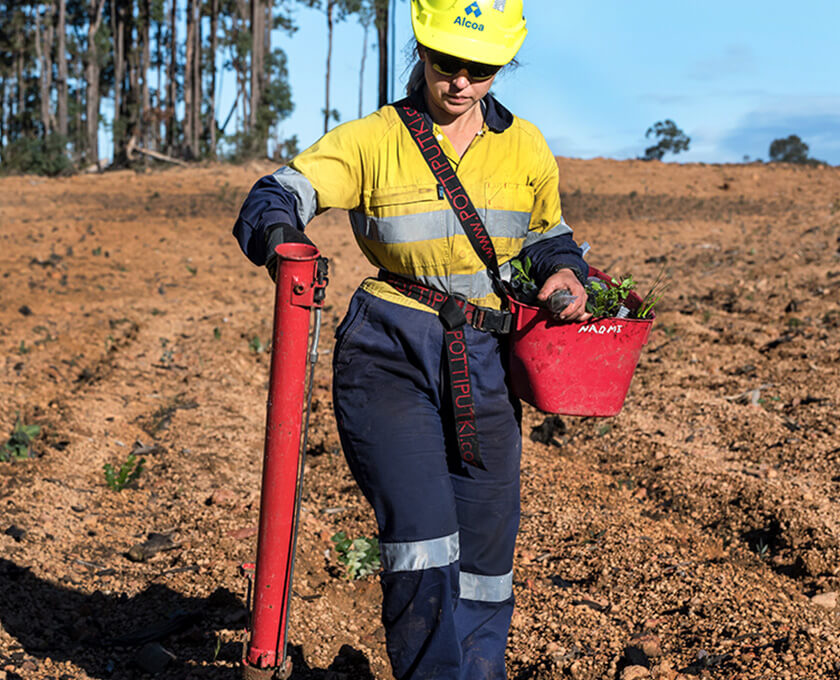June 17, 2024
Planting season kicks off with half-million target

Alcoa’s annual planting season has commenced with more than half a million seedlings destined to be planted across 450 hectares of land undergoing rehabilitation.
The nursery-raised plants, consisting entirely of species that are native to the Northern Jarrah Forest, and more than 1.6 tonnes of macrozamia (native zamia palm) seeds will be added to the rehabilitation areas over the next three to four months.
The areas were prepared for this phase of the rehabilitation process throughout summer and autumn of 2023 with seed-rich topsoil applied along with collected seed from 40 local species.
Plant Production Superintendent Greg Mullins said all species used in rehabilitation were native to the Northern Jarrah Forest.
“We ensure topsoil, collected seed, and the nursery-raised seedlings are all endemic to the area, ensuring our rehabilitated land blends in with surrounding unmined forest and becomes self-sustaining over time,” Greg said.
Hand planting of the nursery-raised plants, which include species that do not easily germinate from seed and may need to be propagated using cuttings and tissue culture techniques, is the final step of a two-year process to revegetate areas previously cleared for mining.
Additionally, and as part of the company’s ongoing process of rehabilitation, more than 650 hectares was landscaped and seeded over this past summer and autumn, ready for planting in the 2025 winter season. It is an increase of some 200ha from last year and is part of Alcoa’s commitment to accelerate its rehabilitation program.
WA Manager of Mines Darrin Strange said Alcoa had allocated additional people and equipment to its rehabilitation operations to enable this first step in the acceleration program.
“The program included the addition of seven trucks, six dozers and three diggers to the fleet, as well as realigning other resources and using our contract operators to beat the target we had set ourselves for the season,” Darrin said.
“We achieved a year-on-year increase from 453ha to 652ha, an achievement worth celebrating.”
The new areas will be assessed ahead of the 2025 winter planting season to determine the required numbers of nursery-raised seedlings. Greg said adjustments were made regularly to the variety of collected seed and nursery propagated plants to continuously improve the success of the rehabilitation program.
“Our team is always seeking to enhance the mix of species being used across our rehabilitation,” he said.
“That involves identifying and improving seed treatment techniques, trialling different species, propagation and planting methods, and working towards our longstanding goal of returning 100 per cent of the plant species richness found in surrounding unmined forest.
“Our agreement with regulators calls for a minimum 60 per cent plant species richness return but over the past 20 years we have averaged more than 90 per cent and hit the 100 per cent goal multiple times.”
Following completion of planting, rehabilitated areas are monitored by the environmental team over multiple years to ensure ongoing successful establishment of self-sustaining forest. Ultimately, areas that have reached a mutually agreeable state of self-sufficiency are targeted for hand back to the State Government to manage.
Over the past three seasons, Alcoa’s rehabilitation has exceeded the amount of new clearing and this is projected to continue across the two mine sites into the future.
The company recently announced it would establish the Forest Research Centre, an initiative devoted to broadening understanding of forest health. As well as informing continuous improvement in mine site rehabilitation and restoration, the goal is that research through the centre will have far wider application for forest protection, restoration and ongoing management globally. One of the targeted research streams will focus on Indigenous knowledge to support long-term forest benefits.